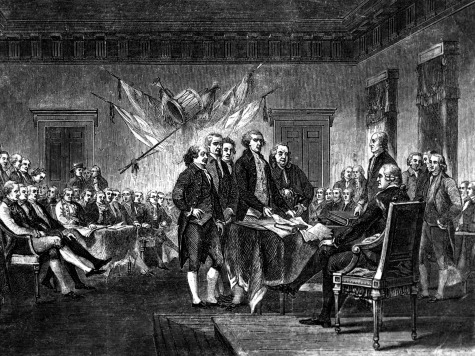In August the first wave of approximately 500,000 high school sophomores and juniors will begin courses based on the College Board’s redesigned AP US History Framework. The new Framework is a poorly organized and biased document that presents a consistently negative view of American history that is not aligned with legally mandated state curriculum standards.
It should come as no surprise that the College Board’s redesigned AP US History Exam is also badly flawed. The consequences could be severe for students and their families. Colleges can and usually do grant history course credits to top-scoring students, thus saving their families thousands of dollars. In addition, high AP scores are impressive to college admission committees.
Given the exam’s importance, teachers, students, and parents rightly expect the College Board to create a fair and valid exam. Unfortunately, it has not. The new exam begins by replacing 80 content-based multiple-choice questions (based on a broad range of topics) with 55 multiple-choice questions based on a limited range of quotes, graphs, pictures, and political cartoons. The old multiple-choice questions counted for 50 percent of the total score while the new questions count for just 40 percent.
The changes in the exam are not limited to multiple-choice questions. After spending 55 minutes answering the multiple-choice questions, students will have 45 minutes to answer four free-response essay questions, each with two to three subparts. This gives students just over 11 minutes to answer each question. Many AP US History teachers are already questioning if students can complete all four questions in the limited allocated time. These four questions will count for 20 percent of the total score.
Students will then be given a document-based question, popularly known as the DBQ. Part of AP US History exams for over 40 years, the DBQ previously asked students to develop a thesis or point of view about eight to ten documents. The new DBQ will provide students with just five to seven documents. This task will require one hour and count for 25 percent of a student’s score.
Weary students are still not finished. After spending an hour on the DBQ, students must choose one of two topics and compose a 35-minute essay. The essay will count for 15 percent of the total score.
In the past, teachers and students had a wealth of high-quality preparation materials that included seven released exams with 600 multiple-choice questions. In addition, the College Board’s AP Central website provided a trove of valuable materials that included 26 DBQ’s, 104 essay questions, and nearly 400 graded sample essays. These resources provided an impressive array of materials that enabled students to fully prepare for the exam.
These preparation materials are now gone. The College Board has given AP US History teachers just one sample test containing 55 multiple-choice questions, four short answer questions, one DBQ, and two long essay questions. That’s it. There are no sample essays for any of the new essay formats. Even worse, graders will now use a new “analytic rubric” to score the essays. According to the College Board website, the analytic rubric “will focus on one or another historical thinking skills.” What does this mean? We actually don’t know. The College Board has failed thus far to provide any sample essays that illustrate the new scoring rubric.
Parents, concerned citizens, and education officials who want to inspect and evaluate the one sample AP US History Exam will be surprised to learn that they can’t. The College Board has provided a password-protected electronic copy of the sample test only to teachers who have successfully completed the audit of their AP US History course. The College Board’s “condition of use” sternly warns teachers, “Exams may not be posted on school or personal websites, nor electronically distributed for any reason.” The College Board further warns about copyright violations and loss of privileges for any teachers who don’t follow its rules.
The College Board’s policy deliberately prevents parents and school officials from evaluating the new test. It also discriminates against schools that have chosen not to participate in the College Board audit and students who are either home-schooled or self-studying for the AP US History Exam. So much for the College Board’s claim to deliver opportunity to all students.
In the popular game show Deal or No Deal, contestants could accept a prize by saying “Deal!” or turn it down by saying “No Deal!” The redesigned AP US History Framework and Exam are unfortunately not a game show. They will have real consequences that include what approximately 500,000 of America’s most talented sophomores and juniors will learn about our nation’s values and traditions. They will also play an important role in college admissions and family budgets. Given the egregious flaws in both the Framework and the Exam, parents and concerned citizens must demand that appropriate educational officials tell the College Board “No Deal!” The College Board should delay the new course for at least a year while new committees revise the Framework and Exam and develop more test prep materials.
Jane Robbins is the senior fellow of APP Education of the American Principles Project, a conservative advocacy organization based in Washington, D.C.
Larry Krieger is a retired AP U.S. History teacher from Pennsylvania.

COMMENTS
Please let us know if you're having issues with commenting.